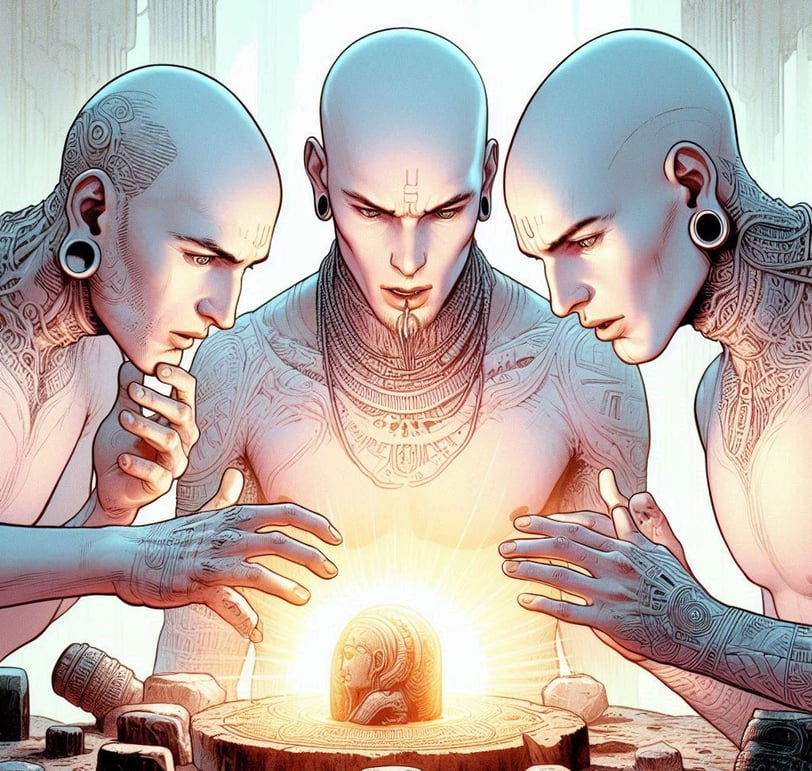Rethinking Fairness in the Age of AI Creativity
What if the real problem isn’t the machine, but the system we built before it?
Walid Ghali
4/16/20252 min read


Rethinking Fairness in the Age of AI Creativity
When I look at an image generated by a prompt—say, three pale-skinned, hairless men adorned with tribal tattoos and piercings, gathered around an ancient, glowing artifact in a Moebius-style dreamscape—I don’t just see an illustration. I see a glimpse into a future that’s already arriving.
This image, full of emotion, complexity, and ethereal beauty, was created in seconds. What once might’ve taken days of careful sketching, digital painting, and revision was generated through an intelligent process that mimics human artistry. That speed is staggering—and, for some, unsettling.
But does it deserve to be vilified?
It’s easy to see AI as a threat to traditional creative labor. And yes, that concern is valid. But there’s another side to this coin—one we often overlook. Maybe AI isn’t here to devalue creativity. Maybe it's here to reveal how our current systems have already devalued it.
Take the film industry, for example. We pour hundreds of millions into a single movie. That money, however, doesn’t flow equally. A-list actors and executives walk away with enormous checks, while the artists who render the visual magic often work under crushing deadlines for modest pay. We’ve accepted this inequality as part of the “creative process.” We call that fair.
But when AI generates a scene, we cry foul. We call it “unfair.” Why? Because it exposes a reality we’ve long ignored—that the system was already broken, and AI just made it obvious.
AI isn’t the enemy. It’s a tool. A mirror. A potential force for liberation if used intentionally. What we do with it is up to us.
Imagine a future where independent filmmakers can generate cinematic scenes without needing $50 million. Where illustrators can brainstorm ten visual ideas in a minute, not ten hours. Where storytellers with no access to studios or teams can bring worlds to life—and maybe, just maybe, be valued for their vision rather than their access.
This doesn’t mean we abandon human creativity. Quite the opposite. It means we elevate it—by shifting the focus from how long it took to what it evokes, from who made it by hand to who made us feel something.
We’ve been stuck in a model that rewards gatekeeping and inefficiency. Maybe it’s time to change. Not by rejecting AI, but by embracing its potential to democratize, accelerate, and inspire. The art is still ours. The stories are still ours. The tools are just catching up.
